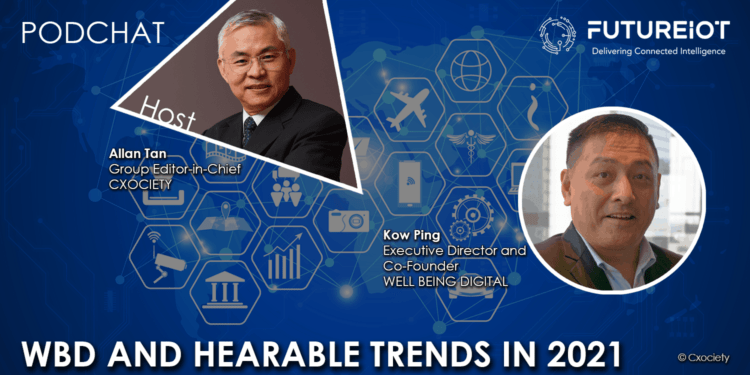According to a Gartner report, consumer spending on wearable technology will double by 2021. Apple, for example, is set to debut its first augmented reality headset in 2022 — with the goal of replacing the phone in your pocket with a pair of glasses.
During the COVID-19 crisis, body temperature checks are routinely done in confined public places such as malls, restaurants, markets, factories and offices. The most common places to measure body temperature are the mouth, ear, armpit and rectum.
People hoist their palms or put their foreheads to a scanner for quick reading. But just how accurate is this approach remains a bone of contention. And given how the body’s temperature can change within the day during the onset of an infection, is there a better way to monitor one’s body temperature and be apprised of the changes?
While hearable technology has mostly been associated with auditory applications, other applications including connecting to smart assistants and providing health status are moving mainstream. One company, Hong Kong-based Well Being Digital (WBD101) is using multiple light sources, including infrared, to capture biometric data and convert it to usable information.
According to Kow Ping, executive director and co-founder at WBD101, which makes his company’s approach different are its patented application of multiple sensors.
“When applied at the ear, this technology results in the world’s smallest and most accurate bio-sensing earbuds,” he added.
Research firm, MarketWatch, noted that healthcare applications accounted for the largest share in 2017. The evolution of technology allows people to measure heart rates and other parameters such as body temperature, blood pressure, pulse oximetry, electrocardiogram (ECG), electroencephalogram signals, and others using various smart hearable devices available in the market.
Companies in this market also started offering new capabilities in hearables to the elderly and other patients. These hearable devices also help manage specific health conditions and disease states.
Ping acknowledged that WBD101 is itself undergoing clinical trials of some of its products in the region, including non-invasive diabetic sensing. It is also continuing R&D efforts to finetune its technology around blood pressure and cholesterol sensing.
Click on the PodChat player above to listen to Ping as he shares his views and understanding of the wearable and hearable technologies and marketplace.
- Let’s start off with a 30-second elevator pitch of who is Well Being Digital?
- In your view, how has COVID-19 impacted the wearable industry?
- Specific to hearable technology, what are the current innovations around it?
- Are there any industrial or commercial (not to be confused with the consumer) use cases for hearables today?
- Beyond these (#2/#3) applications/use cases, what can we look forward to in terms of ideas being considered in R&D labs?
- As a business, what remains a major challenge for hearable tech companies to get traction across a broader marketplace?
- What are your expectations for the hearable marketplace in 2021 and beyond?
ResearchAndMarkets forecasts the global hearable market to grow at a CAGR of 11.7% from 2020-2025. The report noted that a hearable is “a remote in-ear computational earpiece. Basically, you have a smaller scale PC that fits in your ear trench and uses remote innovation to supplement and improve your listening knowledge. Numerous hearables will likewise include extra components, for example, heart rate observing.”
Ping commented that consumer awareness remains a key challenge for the industry. WBD101 itself partners with other brands like JBL, Philips, TCL and Hera Leto One, to incorporate its technologies into consumer products.
Sensors in wristbands and earbuds just collect biodata. What you do with this data is where the value is.
“The wristband doesn’t tell you what to do next. Do you speed up or slow down? Should you rest because your blood pressure is going up? We are going beyond just recording those biometric data, we are working on AI to analyse this data and advise you on what to do next,” he elaborated.



